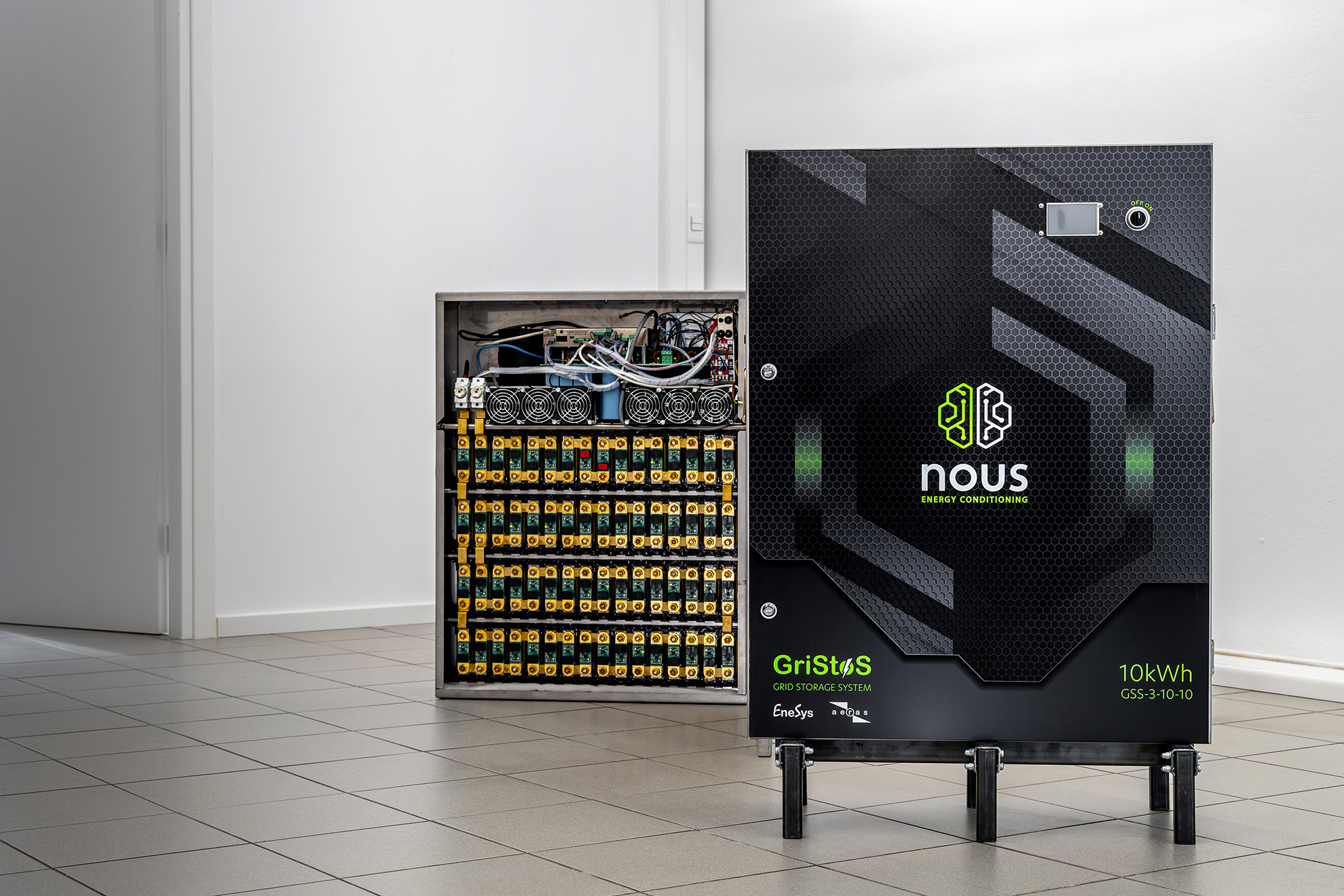

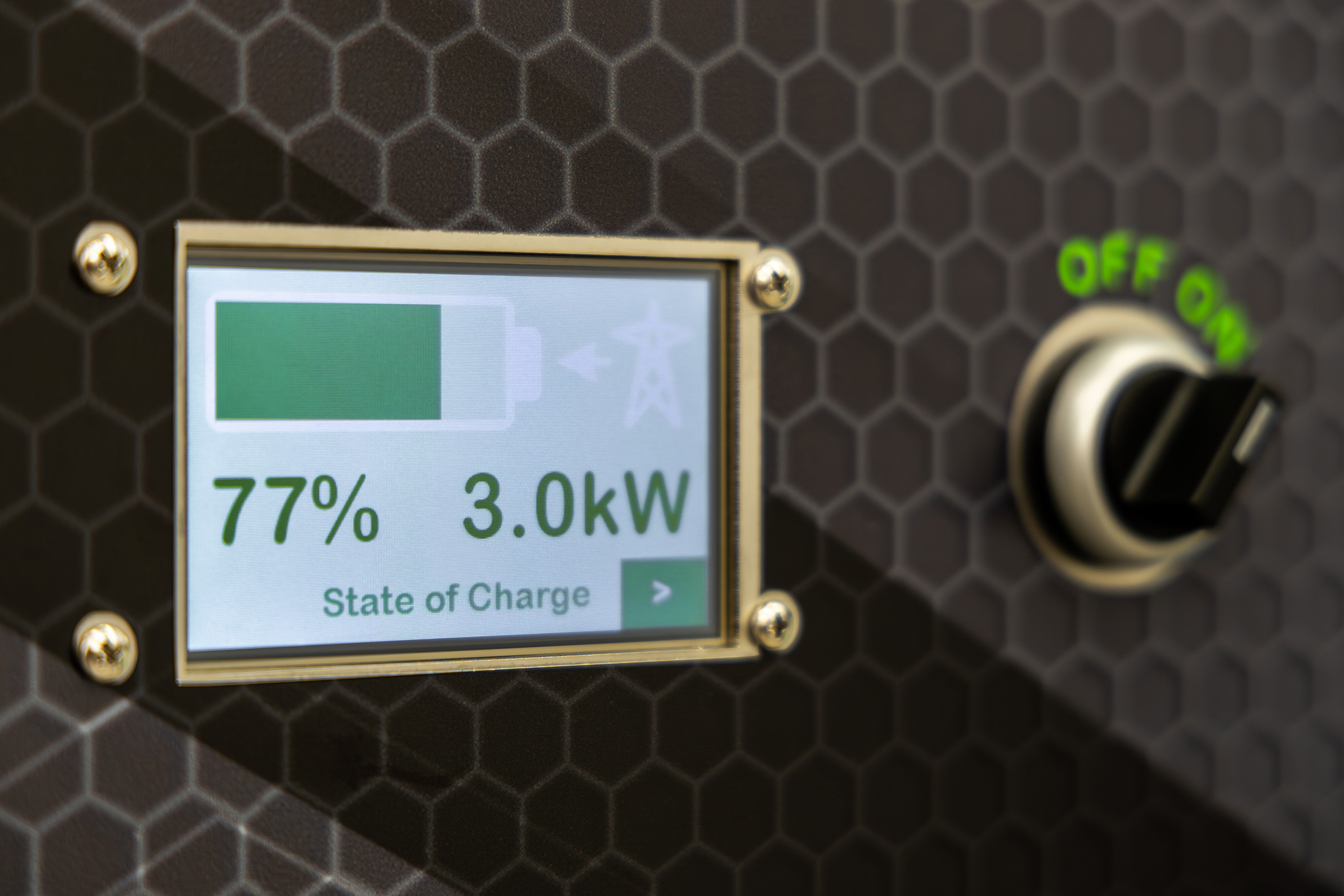
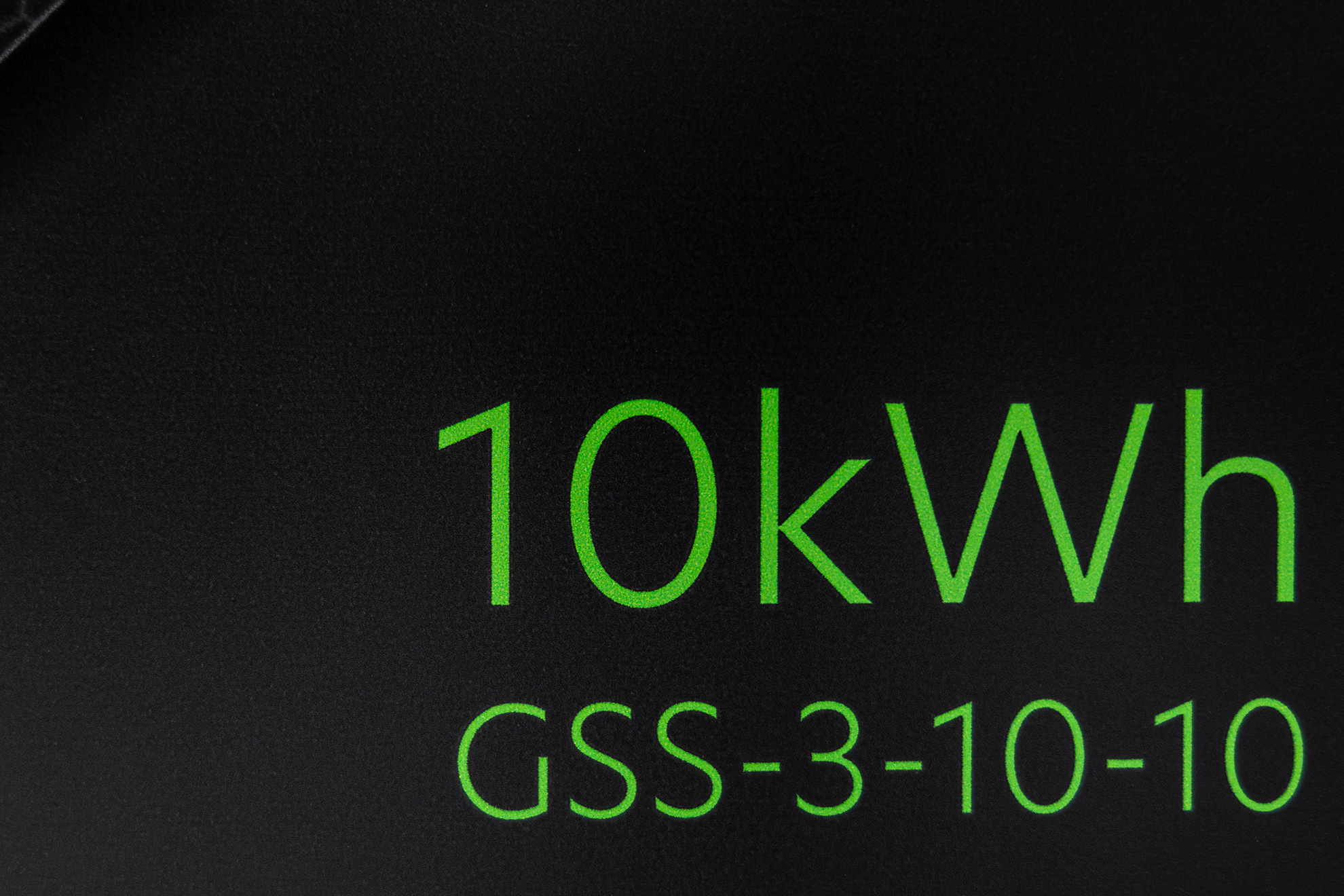
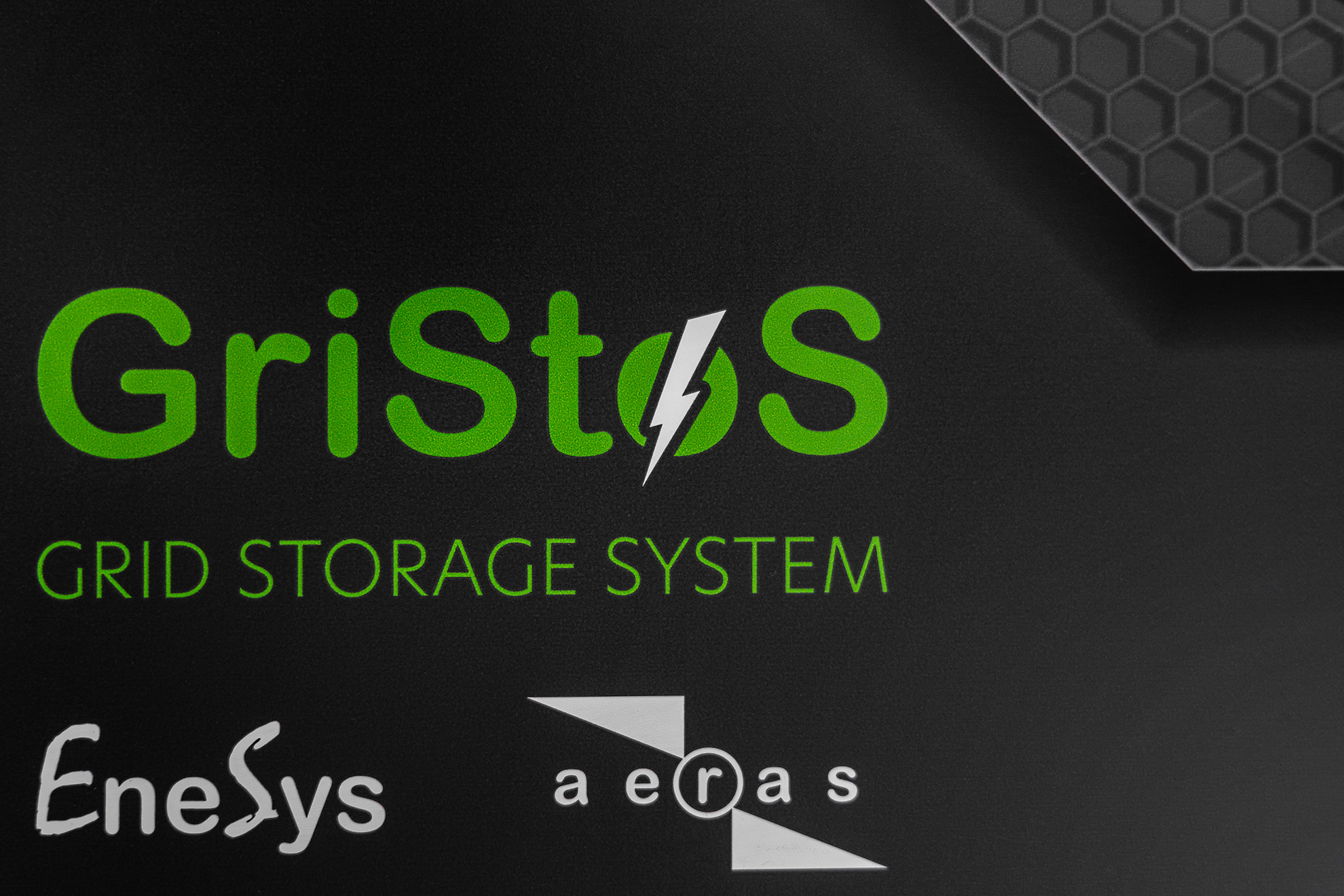
WHY GRISTOS?
The “GriStoS” storage system is intended to create the technical framework for a broader use of renewable energy sources to largely cover future energy requirements. An extensive energetic autonomy creates a basis for a secure and more predictable economic development of various entities; ranging from small businesses and small agricultural units to medium-sized production companies, up to the regional and national economy.
The wide range of functions from the technical point of view of the storage system result from the fundamental issues of secure energy supply and grid stability and from the availability characteristics of the renewable energy sources.
SPECIFICATIONS
The storage system “GriStoS” has been designed and developed so that there is a high degree of flexibility with regard to the circumstances of the location and the application goals. The scope of the system functions can be freely adapted to the respective user profile. In addition, the modular design achieved as a result of the system concept allows a power range from 3.6 kW to 20 MW and a storage capacity of 10 kWh to 40 MWh.
The technical operating behavior of the “GriStoS” enables a very wide range of functions and applications:
- Network Services by provision of re-active power for voltage stabilization at the grid connection point Smoothing of peak loads in local and regional energy distribution network sections and also Load shifting through the use of the storage system as a controlled consumer.
- Increasing the network penetration of renewable energy from stochastic fluctuating sources.
- Increasing the energy autonomy and self-consumption of prosumers by improving the temporal correlation between own energy generation and demand.
- Optimization of the energy demand of consumers by avoidance of load peaks at the grid connection point and Load shifting to times when energy is cheaper, including renewable sources.
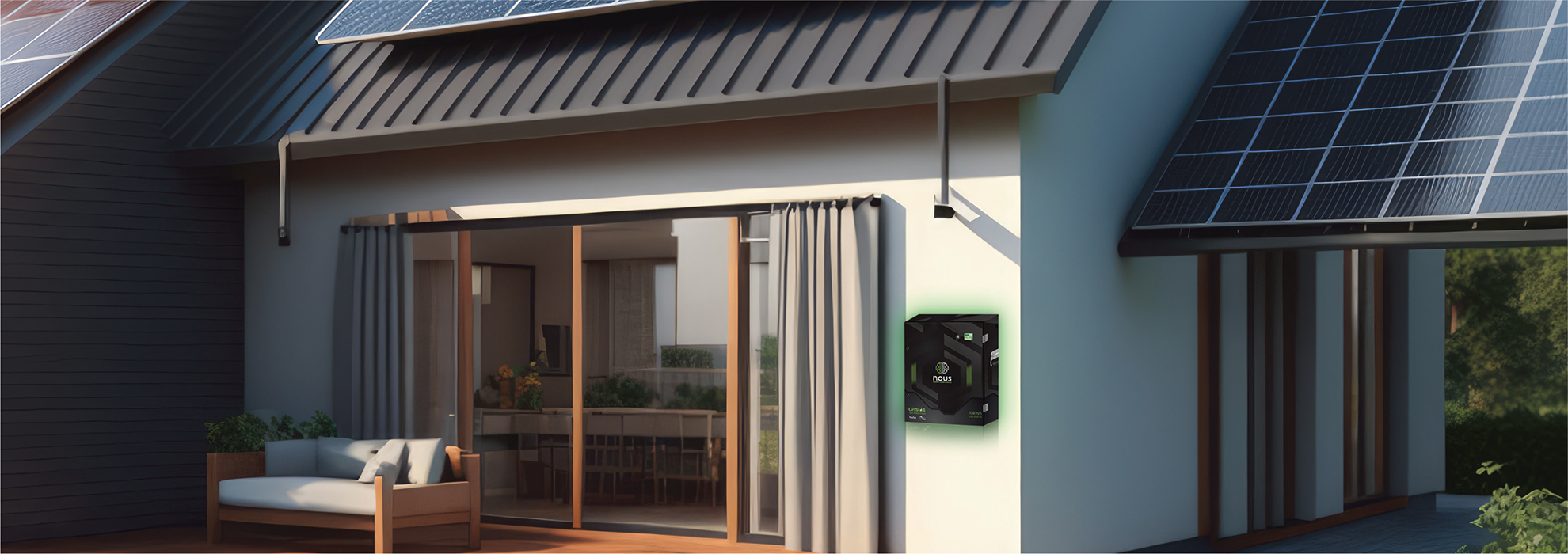
OPERATION MODE
Thanks to its self-learning and self-adapting operational management, the system can adapt its operating behavior to the conditions of the grid connection point and the operating behavior of the cooperating energy systems, e.g. adapt to the operation of photovoltaic systems. In addition, it is possible to choose between different operating modes via the operating menu.
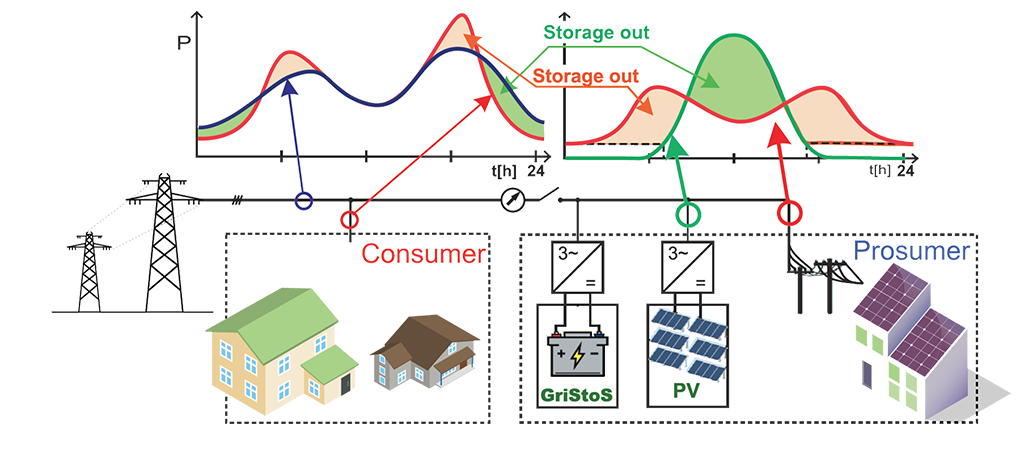
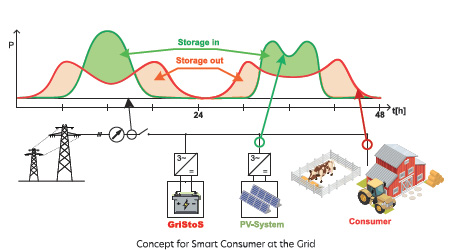
In the case of the “generation-oriented supply mode”, energy is drawn from the electrical grid at times when there is excess energy in the local grid, i.e. low consumption in the local grid and/or high generation from renewable energy sources. This operating mode can also be implemented with a prioritization of an energy purchase if certain local renewable energy sources provide the required amounts of energy.
The “Grid Conditioner“ operating mode gives the system the operating behavior of a voltage source. This means that the voltage at the grid connection point is stabilized or regulated within the nominal voltage range by providing the required reactive power. If the GriStoS system is operated in a micro-grid, the micro-grid frequency can be stabilized by providing active power.
In the “Grid Storage” operating mode, the system dynamically feeds required active and reactive power to networks nodes, which are essential for supplying a region. In this case, the system reacts autonomously to the grid situation based on the implemented algorithms for grid control or is managed by the grid operator, i.e. the system receives the target values from outside.
The “Prosumer” operating mode is for customers who consume energy but also provide energy. Since in most cases the temporal progression of one’s own energy demand does not correlate with the progression of one’s own energy generation, energy is drawn from the electrical grid at times of low own energy generation and at times of excess own energy it is fed into the grid. This is done under the assumption that the electrical grid can always absorb or provide any amount of power and energy.
The operating modes are:
In the “Smart Consumer” operating mode, the “GriStoS” system behaves like a flexible or controlled consumer. The system optimizes the consumption profile over the course of the day in relation to the supply network. The system ensures either for:
- a constant energy supply from the grid or
- a generation-oriented energy supply from the grid.
In the case of the “constant energy supply mode”, constant power is fed from the grid regardless of the energy demand over the course of the day, following a constant ‘grid supply set-point’.
The difference between demand and grid supply is compensated by the “GriStos” system. This means when the power demand is lower than the ‘grid supply set-point’, the excess energy is absorbed by charging the “GriStoS” system.
At times of peak loads or power demand higher than the ‘grid supply set-point’, the difference is provided by discharging the storage system.
In the case of the “generation-oriented supply mode”, energy is drawn from the electrical grid at times when there is excess energy in the local grid, i.e. low consumption in the local grid and/or high generation from renewable energy sources.
This operating mode can also be implemented with a prioritization of an energy purchase if certain local renewable energy sources provide the required amounts of energy.
The “Grid Conditioner“ operating mode gives the system the operating behavior of a voltage source. This means that the voltage at the grid connection point is stabilized or regulated within the nominal voltage range by providing the required reactive power. If the GriStoS system is operated in a micro-grid, the micro-grid frequency can be stabilized by providing active power.
In the “Grid Storage” operating mode, the system dynamically feeds required active and reactive power to networks nodes, which are essential for supplying a region. In this case, the system reacts autonomously to the grid situation based on the implemented algorithms for grid control or is managed by the grid operator, i.e. the system receives the target values from outside.
The “Prosumer” operating mode is for customers who consume energy but also provide energy. Since in most cases the temporal progression of one’s own energy demand does not correlate with the progression of one’s own energy generation, energy is drawn from the electrical grid at times of low own energy generation and at times of excess own energy it is fed into the grid. This is done under the assumption that the electrical grid can always absorb or provide any amount of power and energy.
The capacity of the electrical network decreases in relation to the increasing nominal power of the grid-connected renewable energy systems. This throttles the performance of the converter systems for renewable energy sources at times when there is a high availability of renewable energy. On the one hand, this reduces the efficiency of the converter systems and, on the other hand, the local electrical network is overloaded.
If desired, the GriStoS system can form and “Island Grid” in the event of a grid interruption and autonomously supply the operator’s consumers. This assumes that the connection to the public network is disconnected using the switch provided for this purpose. The system opens the switch or detects the grid disconnection and then builds up the island grid. The voltage is constantly regulated to 3×400 V~ and the frequency to 50Hz.
OPERATION MODE
Thanks to its self-learning and self-adapting operational management, the system can adapt its operating behavior to the conditions of the grid connection point and the operating behavior of the cooperating energy systems, e.g. adapt to the operation of photovoltaic systems. In addition, it is possible to choose between different operating modes via the operating menu. The operating modes are:
- Smart Consumers
- Grid Conditioner
- Grid Storage System
- Prosumers
- Island Grid
Thanks to its self-learning and self-adapting operational management, the system can adapt its operating behavior to the conditions of the grid connection point and the operating behavior of the cooperating energy systems, e.g. adapt to the operation of photovoltaic systems. In addition, it is possible to choose between different operating modes via the operating menu. The operating modes are:
- Smart Consumers
- Grid Conditioner
- Grid Storage System
- Prosumers
- Island Grid
In the “Smart Consumer” operating mode, the “GriStoS” system behaves like a flexible or controlled consumer. The system optimizes the consumption profile over the course of the day in relation to the supply network. The system ensures either for:
- a constant energy supply from the grid or
- a generation-oriented energy supply from the grid.
In the case of the “constant energy supply mode”, constant power is fed from the grid regardless of the energy demand over the course of the day, following a constant ‘grid supply set-point’.
The difference between demand and grid supply is compensated by the “GriStos” system. This means when the power demand is lower than the ‘grid supply set-point’, the excess energy is absorbed by charging the “GriStoS” system.
At times of peak loads or power demand higher than the ‘grid supply set-point’, the difference is provided by discharging the storage system.
In the “Smart Consumer” operating mode, the “GriStoS” system behaves like a flexible or controlled consumer. The system optimizes the consumption profile over the course of the day in relation to the supply network. The system ensures either for:
- a constant energy supply from the grid or
- a generation-oriented energy supply from the grid.
In the case of the “constant energy supply mode”, constant power is fed from the grid regardless of the energy demand over the course of the day, following a constant ‘grid supply set-point’.
The difference between demand and grid supply is compensated by the “GriStos” system. This means when the power demand is lower than the ‘grid supply set-point’, the excess energy is absorbed by charging the “GriStoS” system.
At times of peak loads or power demand higher than the ‘grid supply set-point’, the difference is provided by discharging the storage system.
In the case of the “generation-oriented supply mode”, energy is drawn from the electrical grid at times when there is excess energy in the local grid, i.e. low consumption in the local grid and/or high generation from renewable energy sources.
This operating mode can also be implemented with a prioritization of an energy purchase if certain local renewable energy sources provide the required amounts of energy.
The “Grid Conditioner“ operating mode gives the system the operating behavior of a voltage source. This means that the voltage at the grid connection point is stabilized or regulated within the nominal voltage range by providing the required reactive power. If the GriStoS system is operated in a micro-grid, the micro-grid frequency can be stabilized by providing active power.
In the “Grid Storage” operating mode, the system dynamically feeds required active and reactive power to networks nodes, which are essential for supplying a region. In this case, the system reacts autonomously to the grid situation based on the implemented algorithms for grid control or is managed by the grid operator, i.e. the system receives the target values from outside.
The “Prosumer” operating mode is for customers who consume energy but also provide energy. Since in most cases the temporal progression of one’s own energy demand does not correlate with the progression of one’s own energy generation, energy is drawn from the electrical grid at times of low own energy generation and at times of excess own energy it is fed into the grid. This is done under the assumption that the electrical grid can always absorb or provide any amount of power and energy.


In the case of the “generation-oriented supply mode”, energy is drawn from the electrical grid at times when there is excess energy in the local grid, i.e. low consumption in the local grid and/or high generation from renewable energy sources. This operating mode can also be implemented with a prioritization of an energy purchase if certain local renewable energy sources provide the required amounts of energy.
The “Grid Conditioner“ operating mode gives the system the operating behavior of a voltage source. This means that the voltage at the grid connection point is stabilized or regulated within the nominal voltage range by providing the required reactive power. If the GriStoS system is operated in a micro-grid, the micro-grid frequency can be stabilized by providing active power.
In the “Grid Storage” operating mode, the system dynamically feeds required active and reactive power to networks nodes, which are essential for supplying a region. In this case, the system reacts autonomously to the grid situation based on the implemented algorithms for grid control or is managed by the grid operator, i.e. the system receives the target values from outside.
The “Prosumer” operating mode is for customers who consume energy but also provide energy. Since in most cases the temporal progression of one’s own energy demand does not correlate with the progression of one’s own energy generation, energy is drawn from the electrical grid at times of low own energy generation and at times of excess own energy it is fed into the grid. This is done under the assumption that the electrical grid can always absorb or provide any amount of power and energy.
